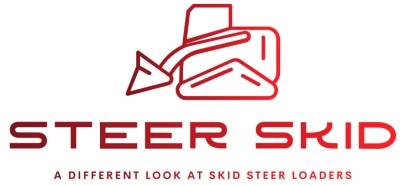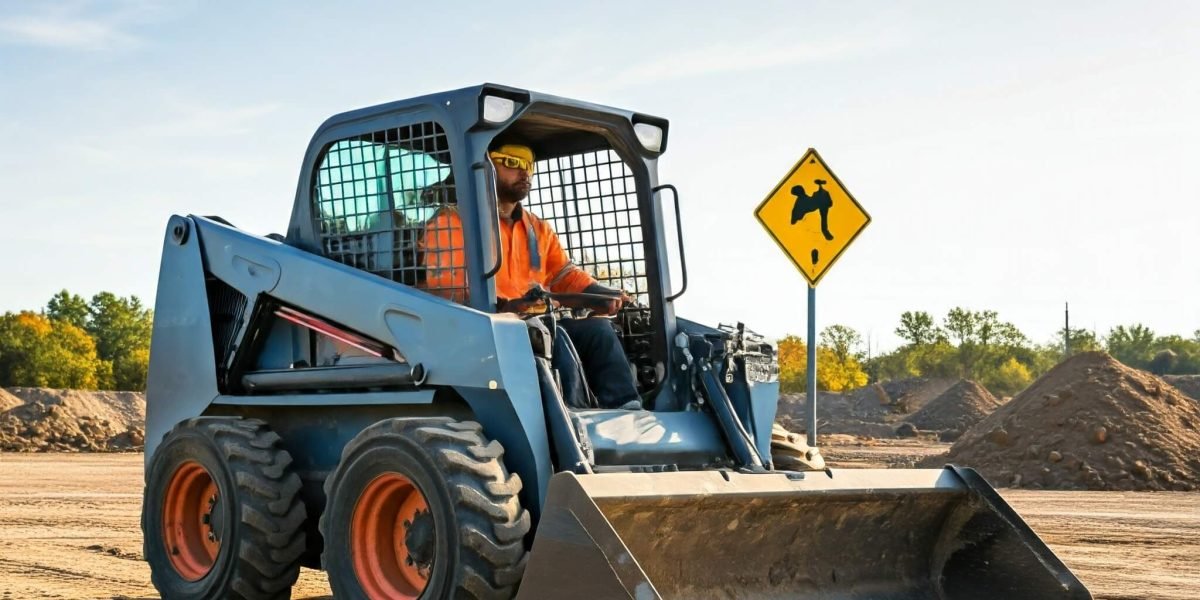Introduction
If you are reading this article, I would assume you know exactly what a skid steer is. With the various skid steer fast connect accessories, you also know they are workhorses and rather flexible. These attachments can be anything from skid steer buckets to grapples, augers to blades, tree shears to brush cutters, and log splitters. If you can conceive of it, an attachment for it will follow. These vehicles can enter locations inaccessible to the big lads.
Versatile and strong tools for a variety of jobs in landscaping, agriculture, and construction, skid steer loaders are Operating a skid steer loader, however, also has inherent hazards should appropriate safety procedures not be taken. Skid steer safety will be thoroughly covered in this paper, including operator safety, equipment safety, accident avoidance, and best practices for safe running.
Still, we have to deal with the safety issues these devices raise. Whether your location is a farm, building site, industrial or landscaping site, junk yard, or weekend warrior in the woods, you need to know your equipment. You must be aware of the hazards it poses as well as what it is and is not capable of. Skid Steers are made to be small, with the center of gravity at the back of the machine. The terrain and weight of the cargo, however, might affect that center of gravity and should push the operator to be always conscious of their surroundings and situations. Here are some more guidelines that you should give great thought to before turning on your workhorse:
Operator Safety
- Training and Certification: Ensure that all operators have received proper training on skid steer operation. Consider requiring certification to demonstrate competency and understanding of safety procedures.
- Personal Protective Equipment (PPE): Operators should wear appropriate PPE, including safety glasses, hearing protection, hard hats, steel-toed boots, and reflective clothing.
- Physical Fitness: Operators should be physically fit and capable of handling the demands of operating a skid steer loader.
- Awareness of Surroundings: Operators should be constantly aware of their surroundings, including other equipment, personnel, and potential hazards.
- Avoid Distractions: Avoid distractions such as using a cell phone or listening to music while operating the skid steer.
Equipment Safety
- Pre-Operation Inspections: Conduct thorough pre-operation inspections to identify and address any mechanical issues or safety hazards.
- Maintenance: Regular maintenance is essential for ensuring the safe and reliable operation of the skid steer loader. Follow the manufacturer’s recommended maintenance schedule.
- Stability: Always operate the skid steer on a stable surface and avoid operating on slopes or uneven terrain.
- Load Capacity: Never exceed the rated load capacity of the skid steer loader.
- Attachments: Use only attachments that are compatible with the skid steer loader and are in good condition.
Accident Prevention
- Hazard Identification: Identify potential hazards in the workplace, such as trip hazards, electrical hazards, and moving parts.
- Risk Assessment: Evaluate the risks associated with each hazard and implement appropriate measures to mitigate them.
- Safe Operating Procedures: Establish and follow safe operating procedures to minimize the risk of accidents.
- Emergency Procedures: Develop and practice emergency procedures in case of accidents or emergencies.
- Communication: Effective communication between operators and supervisors is essential for preventing accidents.
Best Practices for Safe Operation
- Operating Speed: Operate the skid steer at a safe speed appropriate for the conditions.
- Turning Radius: Be aware of the skid steer’s turning radius and avoid sudden or sharp turns.
- Backing Up: Use a spotter or backup alarm when backing up to avoid collisions.
- Forklift Attachments: Exercise caution when using forklift attachments, as they can be unstable if not used properly.
- Overhead Hazards: Be aware of overhead hazards, such as power lines or low-hanging branches.
Additional Safety Considerations
- Weather Conditions: Be aware of weather conditions and adjust operations accordingly. Avoid operating in extreme weather such as heavy rain, snow, or high winds.
- Fire Safety: Have fire extinguishers readily available and know how to use them in case of a fire.
- Environmental Protection: Be mindful of environmental regulations and take steps to protect the environment.
- Security: Implement security measures to prevent unauthorized access to the skid steer loader.
Conclusion
Following these safety rules can help workers and companies greatly lower the risk of mishaps and injuries connected to skid steer loaders. Safety must always be given top priority in all facets of skid steer operation to guard equipment as well as human life.
Not designed to be comprehensive, this is the minimum you should give thought. Add your personal safety precautions to this list and distribute it with other operators. Make sure you return home to see your loved ones sound and secure.

